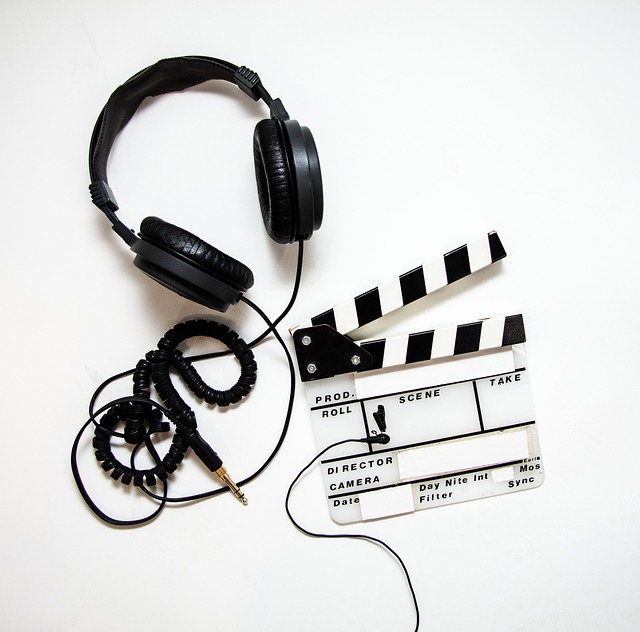
Editing for Engagers: Learn the Secrets of Compelling Videos
In the age of digital content consumption, the art of video editing has become more important than ever. As audiences grow accustomed to high-quality productions, the demand for engaging videos rises. Whether you’re a budding content creator, a seasoned marketer, or a storyteller aiming to captivate an audience, understanding the nuances of video editing is essential. This article dives deep into the secrets of creating compelling videos that attract and retain viewers, focusing on editing techniques, storytelling elements, and the psychology behind viewer engagement.
The Power of Storytelling in Video Editing
At the heart of every compelling video lies a great story. Effective video editing turns raw footage into a cohesive narrative that resonates with viewers. The fundamental structure of storytelling typically includes the following elements: a relatable protagonist, a conflict or challenge, a turning point, and a resolution. As an editor, your role is to enhance this narrative through visual and auditory elements.
Crafting a Narrative Arc
Establishing a clear narrative arc is crucial. You need to identify the main message you want to convey and structure your footage accordingly. Here are some tips on creating a compelling narrative:
- Establish a Hook: The beginning of your video should grab attention immediately. Use intriguing visuals, a thought-provoking question, or an enticing statement to draw viewers in.
- Build Tension: Introduce challenges or conflicts that the protagonist must face. This keeps viewers invested in the outcome.
- Climax and Resolution: Lead the audience to a climax where the main conflict is addressed, followed by a resolution that offers closure and satisfaction.
Understanding the Essentials of Video Editing
Mastering video editing requires a blend of creativity, technical skills, and an understanding of the tools at your disposal. Various editing techniques can transform ordinary footage into captivating content. Here’s what you need to know:
Cutting and Trimming
Cutting and trimming are fundamental editing techniques. The goal is to remove unnecessary footage while maintaining a steady flow. Every cut should serve a purpose, either advancing the story or enhancing the emotional impact. Consider the pacing of your video; a brisk pace can create excitement, while a slower pace may evoke reflection. Pay attention to the rhythm of the cuts to keep your audience engaged throughout.
Transitions and Effects
While transitions can add a polished feel to your video, it’s important to use them judiciously. Simple cuts often work best, but when transitioning between scenes or concepts, consider using fades, wipes, or dissolves to guide viewers seamlessly from one segment to another.
Effects can also enhance the visual appeal of your video but should not distract from the message. Utilize color grading to set the mood, slow motion to emphasize significant moments, or fast motion to convey urgency. Always aim for a balance that enhances your narrative without overwhelming the audience.
Sound Design and Music
Sound plays a pivotal role in video engagement. Quality audio can elevate an ordinary video into something exceptional. Start with clear narration; a good voiceover can help convey your message effectively. Background music should complement your visuals; consider the emotional tone of your video when selecting tracks.
Additionally, sound effects can provide subtle cues that enhance viewer immersion. The sound of a door creaking or the rustle of leaves can set the scene and draw viewers deeper into the narrative. Always ensure that your audio levels are consistent and that the music doesn’t overpower the dialogue.
The Importance of Visual Composition
Visual composition is not just about how footage looks on screen; it’s about how elements within the frame interact to tell a story. Understanding the principles of composition can greatly enhance the quality of your video.
Framing and Rule of Thirds
Utilize the rule of thirds to create a balanced composition. Imagine dividing your frame into a grid of nine equal segments. Place essential elements along these lines or intersections to create a visually appealing arrangement. This technique draws the viewer’s eye to significant details and helps maintain interest throughout the video.
Color Theory
Color plays a psychological role in viewer perception. Different colors evoke different emotions. Warm colors like red and orange can stimulate energy and excitement, while cool colors like blue and green can communicate calmness and serenity. Consider the emotional journey you want your viewers to experience and choose a color palette that supports this narrative.
Lighting and Contrast
Good lighting can make a significant difference in the quality of your footage. Properly lit scenes are more engaging than poorly lit ones. Use natural light when possible, or invest in effective artificial lighting to enhance your shots. Contrast is also important; a well-lit subject against a darker background can draw attention effectively and create an emotional impact.
Engaging Your Audience Through Editing Techniques
The ultimate goal of your video editing is audience engagement. There are specific editing techniques you can use to ensure that viewers stay invested from beginning to end.
Creating a Sense of Urgency
To keep viewers on the edge of their seats, consider using quick cuts, dynamic transitions, and a fast-paced soundtrack. These elements create urgency, inciting viewers to stay tuned for the resolution or outcome. This technique is especially effective in promotional content, trailers, or any video meant to drive action.
Incorporating Visual Variety
Viewers tend to lose interest if the video is visually monotonous. Incorporating various shots—such as close-ups, wide shots, aerials, and over-the-shoulder angles—can maintain engagement. Transitioning between different perspectives allows viewers to experience the narrative from multiple angles, which enhances their understanding and emotional connection to the story.
Engaging Text and Graphics
Text overlays and graphics are valuable tools for conveying information quickly and succinctly. Use them strategically to emphasize key points, introduce characters, or provide additional context. Ensure that your text is easy to read and compliments the visual elements rather than distracts from them.
The Psychology of Viewer Engagement
Understanding the psychology behind viewer engagement is key to creating videos that resonate. Viewers desire connection, intrigue, and satisfaction. Here are a few psychological principles to consider when editing your videos:
The Zeigarnik Effect
This psychological phenomenon suggests that people remember unfinished tasks better than completed ones. In terms of video, leaving your audience with unanswered questions can create intrigue and anticipation, motivating them to watch until the end to find the answers.
Emotional Resonance
Emotion is a powerful driver of engagement. Strive to incorporate elements that evoke empathy, joy, sadness, or excitement. Use relatable characters, real stories, and compelling visuals to provoke an emotional response from viewers, creating a memorable experience.
The Principle of Reciprocity
When creators give value, whether through entertainment, knowledge, or inspiration, audiences are more likely to want to return the favor by liking, sharing, or subscribing. Ensure your content provides value to your viewers; this could be through storytelling, educational insights, or relatable experiences.
The Art of Revision and Feedback
Editing is often a process of trial and error. After completing a draft, seek feedback from peers or trusted audiences. An outside perspective can provide clarity and reveal elements you might have overlooked. Use constructive criticism to refine your video further, ensuring that it resonates deeply with your target audience.
Revising with Purpose
An effective revision process involves reviewing your content with a critical eye. Look for areas that can be tightened, added, or removed to improve overall clarity and engagement. A fresh set of eyes can also help assess whether the pacing, tone, and visuals align with your intended message.
Editing for engagement is an iterative process. Learn from each project, apply feedback, and continuously hone your skills. Over time, you’ll develop an intuition for what resonates with audiences and what doesn’t.
Conclusion
In conclusion, editing compelling videos requires mastery of storytelling, a keen understanding of visual and audio elements, and a solid grasp of psychological principles. By focusing on narrative structure, employing effective editing techniques, and valuing the audience’s emotional journey, you can create videos that not only captivate but also engage and inspire. Keep learning, experimenting, and evolving as a creator, and your content will surely resonate with viewers around the globe.


